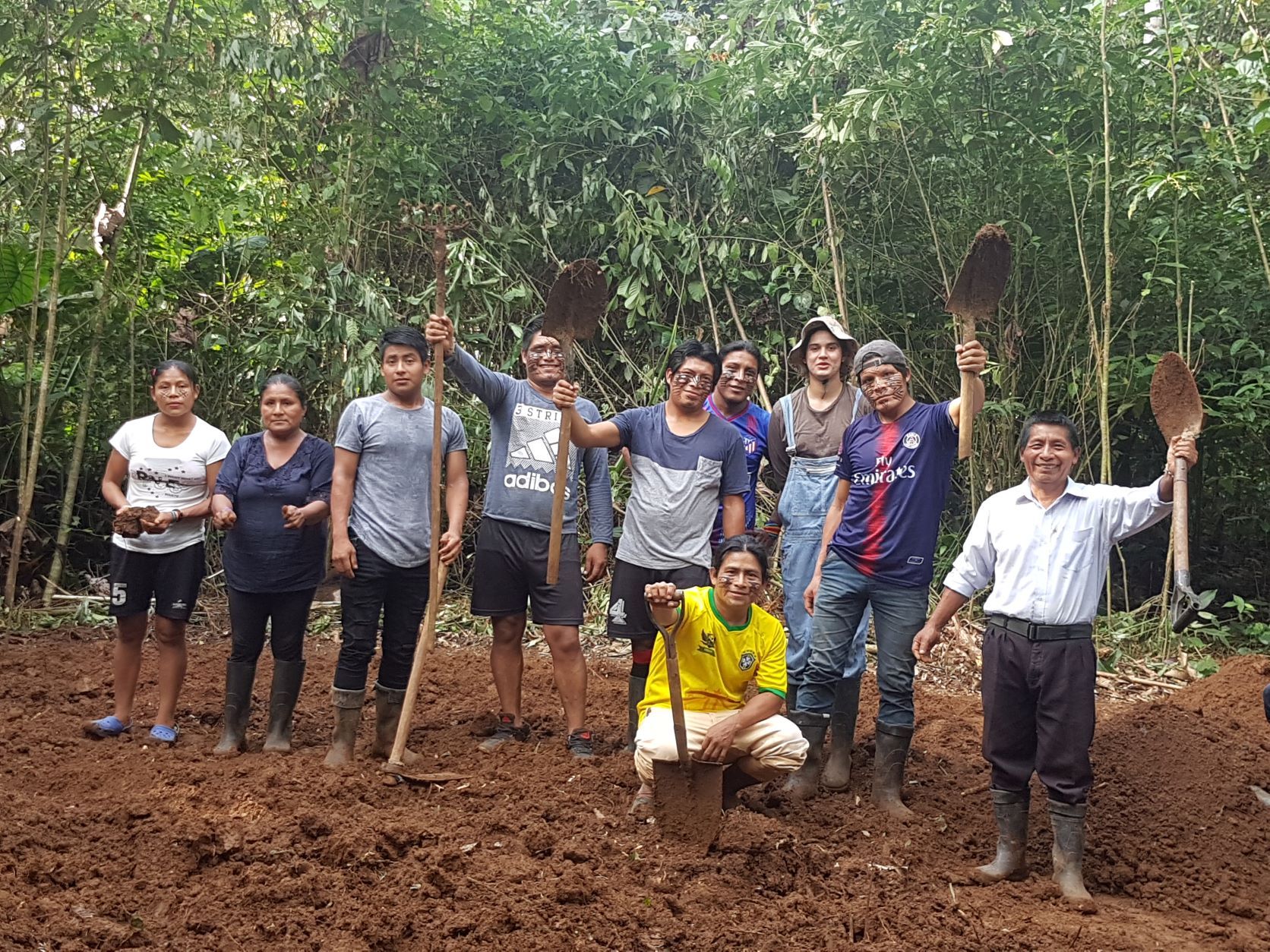The life of the indigenous people has changed
The former way of life of most of the indigenous people of Amazonia as hunters, gatherers and fishermen is no longer sustainable in many regions. The natural resources for subsistence in the area of the villages have been largely plundered. Large forest areas have been destroyed by unprofitable cattle farming. Near the roads, the forest has been sold to timber companies.
Indigenous people are increasingly migrating to the cities due to a lack of prospects in the forest. This rural exodus is further intensified by population growth and the influences of western civilisation. Without education the indigenous people cannot find work in the cities and live in poverty.
At the same time, the rural exodus also endangers the rainforest, because indigenous people are the best guardians for the protection of the rainforests. The affected people are forced to relearn if they want to continue living in and from the forest.
Self-sufficiency through vegetable gardening
Protecting the Amazon rainforest means enabling indigenous people to live and work in the forest in a self-determined and contemporary way. Because where they are at home, there are still intact forests. In order for the Achuar to continue to have a perspective in the forest, they need knowledge in agriculture. This will enable the Achuar to provide themselves with locally grown food.
GREEN BOOTS finances the training of the Achuar in agriculture. For the training of the villagers, an agricultural engineer from the University of Cuenca (Ecuador) visits the project area. He trains the villagers in vegetable cultivation for their own use. On his first assignment, the agricultural engineer stays in the forest for one month and visits the village once a month thereafter to provide further tips and guidance. These monthly visits will continue for a year. In addition to various vegetables adapted to the region, dry rice and corn are also planted.

The Achuar in Ecuador
The territory in the project area belongs to the Achuar people with state-recognized legal title. The Achuar are part of the Jibaro ethnic group, to which the Shuar also belong. Currently, about 20,000 Achuar live in Ecuador and Peru and are organized in two federations. In Ecuador, the approximately 8,000 Achuar settle in the provinces of Pastaza and Morona Santiago on both sides of the Rio Pastaza.
In the course of land surveying, the Ecuadorian state had forced the Amazon peoples to form villages even with unrelated families, which still leads to serious conflicts within the villages. Some large villages today have 300 to 800 inhabitants.
Traditionally, the Achuar settled in clans spread throughout the forest. This type of settlement still exists today. It is much more conducive to peace and healthy development. The villages, with an average of 60 inhabitants from newborn to great-grandmother, have huge forest areas that border each other. Tuna in our project area, for example, is such a clan village and has 30,000 ha of intact rainforest, while the neighboring communities of Kapawari and Tsekuntsa have 75,000 and 15,000 ha respectively. These are also the villages we are currently working with.





